

Andrew Maclean
Honda CR-V RS e:HEV vs Toyota RAV4 Edge Hybrid: Spec battle
5 Days Ago
If ridiculously quick German sports cars are your thing, the most powerful BMW series production car ever created could be right up your alley.
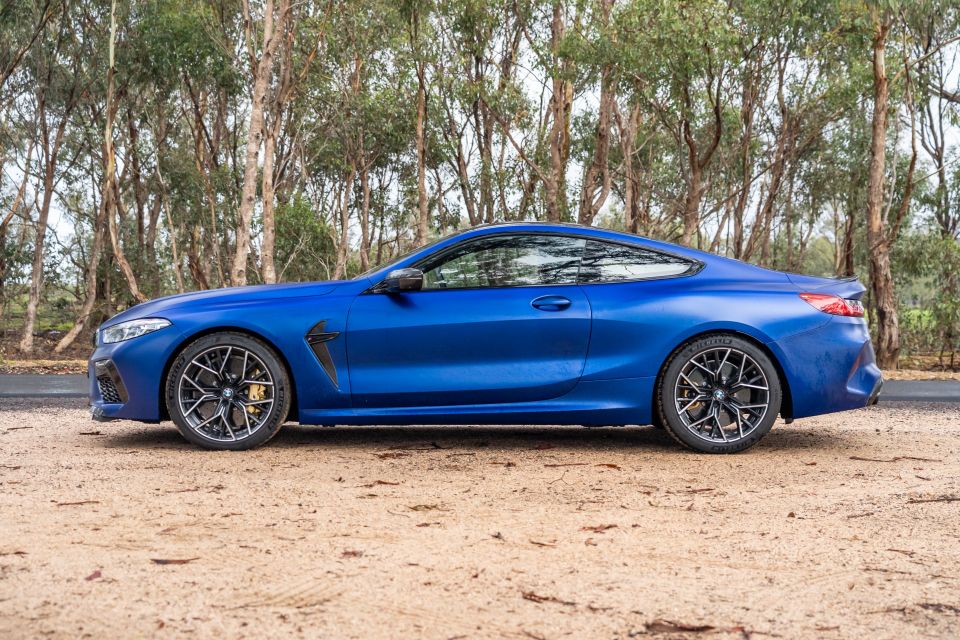
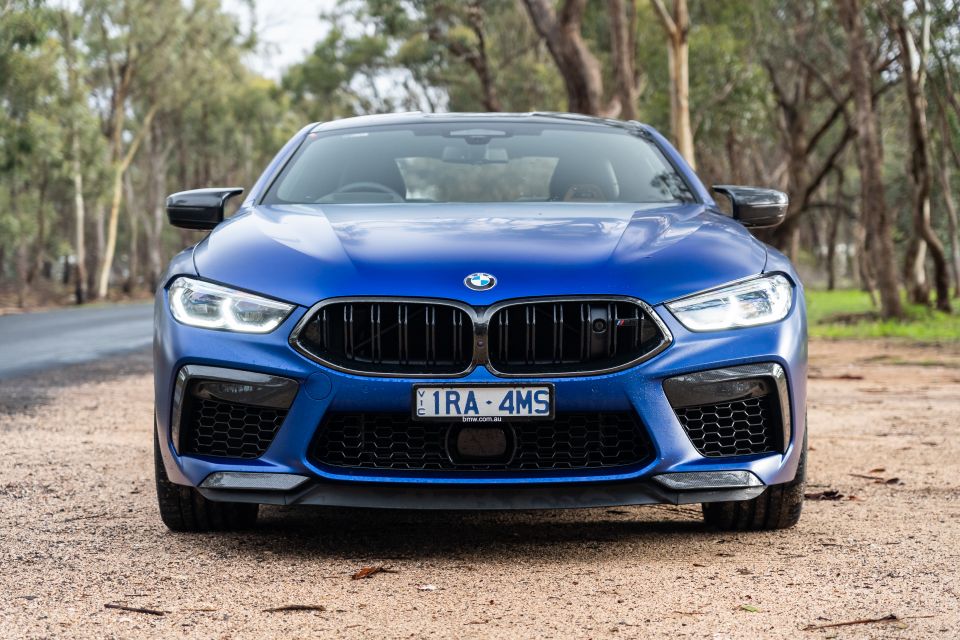

Founder
New from
$349,900
excl. on-roads

Founder
New from
$349,900
excl. on-roads


Founder
New from
$349,900
excl. on-roads

Founder
New from
$349,900
excl. on-roads
Quickly see how this car stacks up against its competition. Select any benchmark to see more details.
Where expert car reviews meet expert car buying – CarExpert gives you trusted advice, personalised service and real savings on your next new car.
It’s not often that a shiny new car stops people dead in their tracks for a second glance – regardless of whether they’re a car person or not.
The all-new BMW M8 Competition does just that. It’s the most powerful BMW series production car ever built, and has the most Australian name you could ever stick on a car. Pronounced with an Australian accent it reads Maaate Competition.
It partly turns heads because it makes lots of noise, but the frozen colours you can select – such as the Frozen Marina Bay Blue on our test car – make it stand out even more.
It’s damn quick and it turns heads, but does it live up to its lofty price tag? We hit the road to find out.
Make sure you’re sitting down. The asking price for the 2020 BMW M8 Competition is $352,900 before on-road costs.
There are 20 colours to choose from, including seven frozen colours (the matte finish you see on our test car), plus a high-end Pure Metal Silver colour. The frozen colours will set you back an additional $2600, while the Pure Metal Silver colour requires a $10,400 investment.
Outside of that, the only two notable options are the Carbon Package ($10,300) and carbon ceramic brakes ($16,500), both of which were fitted to our test car. The Carbon Package adds a carbon fibre spoiler and carbon inlays in the front splitter and side panels.

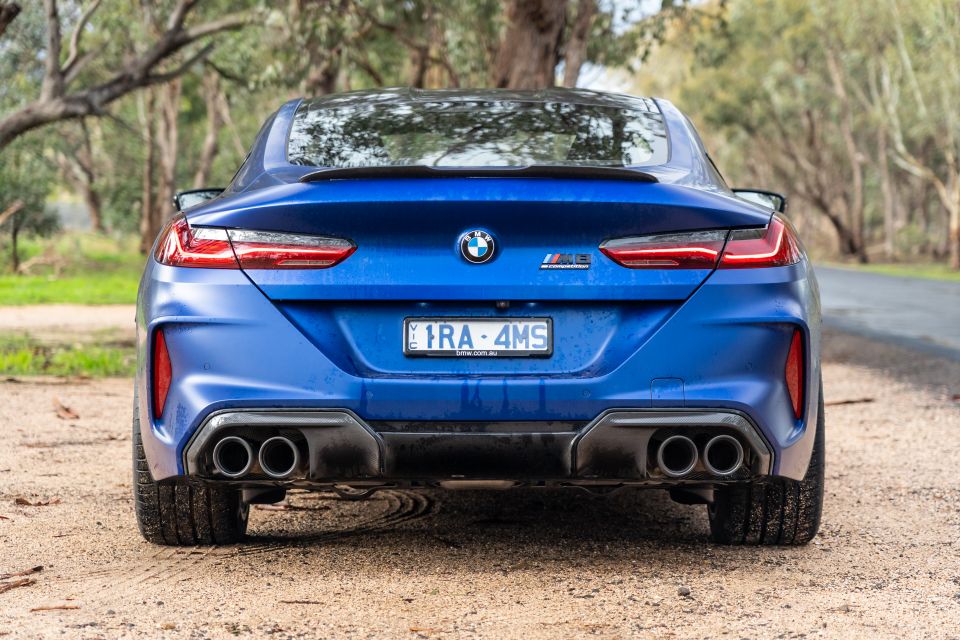
As you can imagine, BMW has thrown everything at the M8 Competition, so the specification level is quite high.
On the outside you’ll find 20-inch alloy wheels, BMW Laserlight headlights, LED daytime running lights, LED taillights, soft-close doors, front and rear parking sensors, an automatic boot closer, and night vision camera.
Inside you’ll find leather seats, a leather-lined dashboard, suede roof lining, heated and cooled seats, a heated steering wheel and armrest, 16-speaker Bowers and Wilkins sound system, head-up display, proximity entry and start, radar cruise control with self-steering function, dual-zone climate control, BMW iDrive OS7.0, and a 360 degree camera.
A note on the laser headlights. They’re seriously good. Visible lighting distance increases to 600m thanks to the use of lasers and mirrors within the headlight cluster that project light through yellow phosphorus and then out through the main lens.


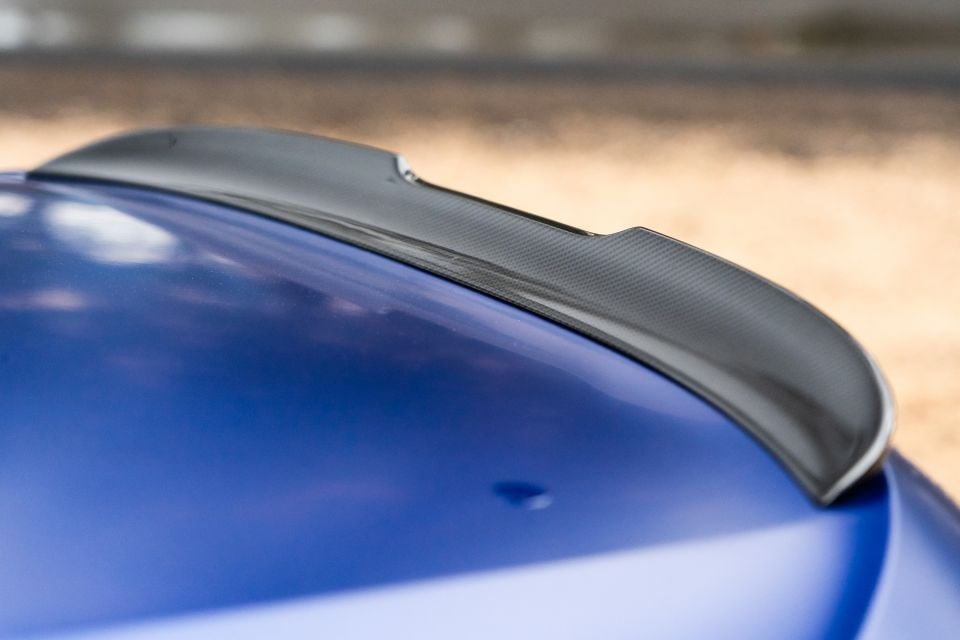

They are coupled with a matrix LED function to help project a high beam around other vehicles.
The BMW 8 Series hasn’t been crash tested by Euro NCAP or ANCAP, but it does come with low- and high-speed autonomous emergency braking (AEB) with pedestrian and cyclist detection.
It also has a night vision camera capable of detecting pedestrians and cyclists for added protection.
There’s a number of standard safety features, such as lane-departure warning and lane-keeping assist, along with safety tech that prevents merging into other vehicles and mitigates the potential for other vehicles merging into you.
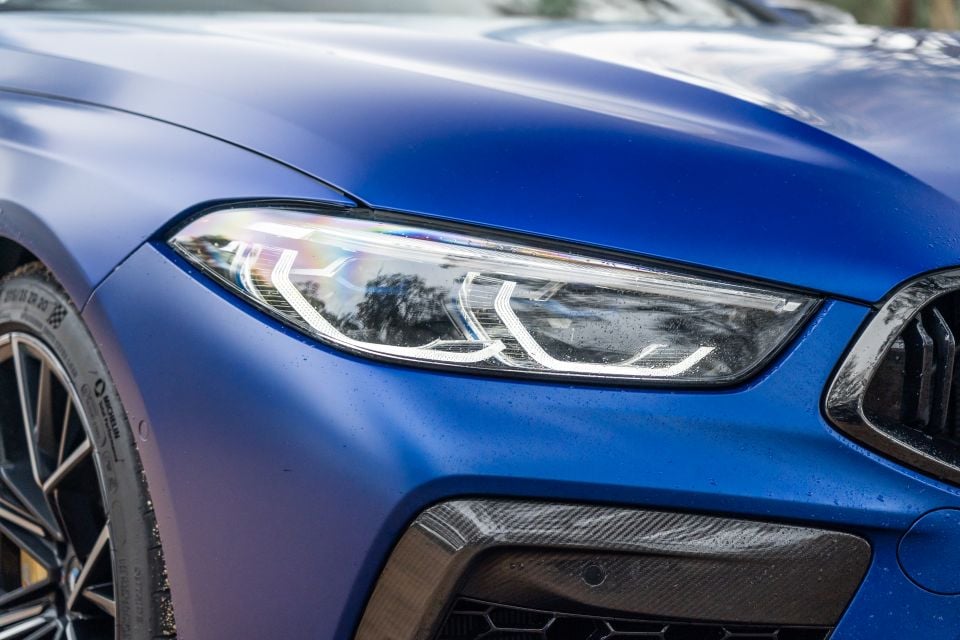
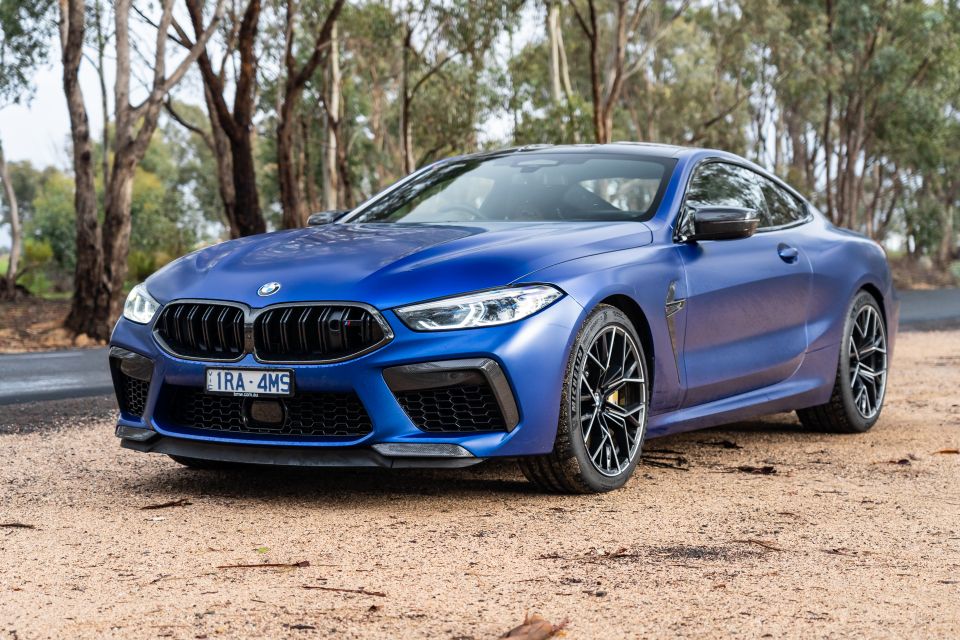
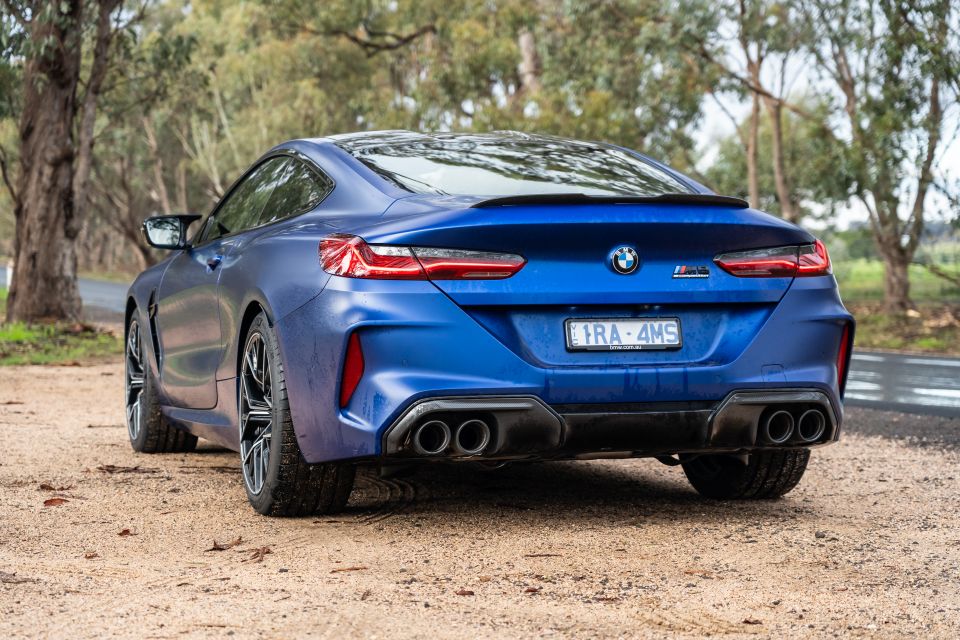
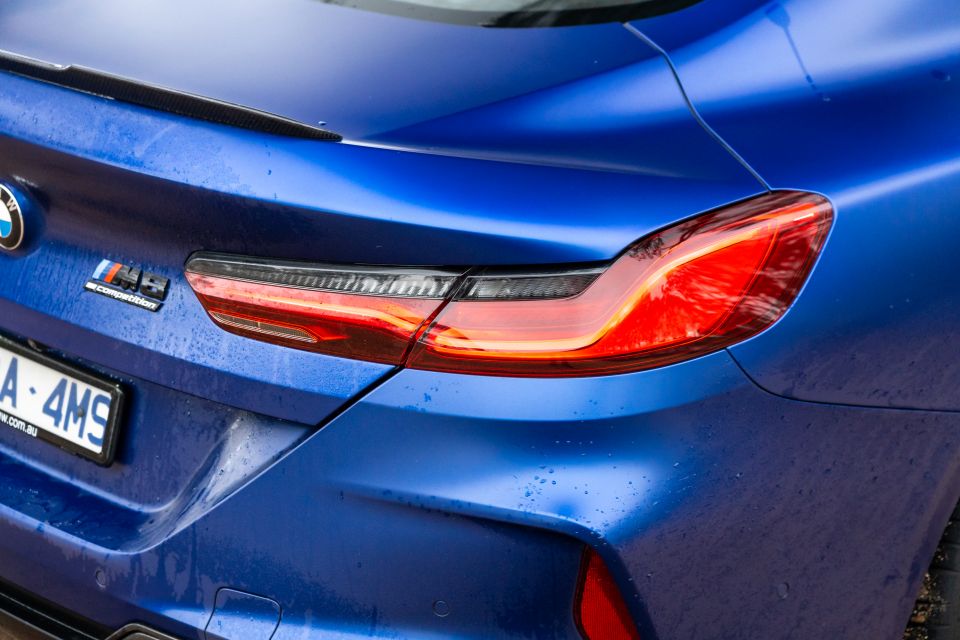
This is the definition of luxury. Merino leather as far as the eye can see and seats that grab you like a warm hug. There’s a lot to like about the M8 Competition’s interior.
Piano black surrounds the centre button console with carbon fibre used in spades around the rest. The glitzy gear shifter from the BMW M850i is replaced with an M gear shifter that includes M-coloured stitching and controls for the shift intensity built in.
Atop the dashboard is BMW iDrive OS7.0 in the form of a 10.25-inch display operated as a touchscreen, or through the rotary controller on the centre tunnel. Ahead of the driver is another 10.25-inch display for critical functions and a massive head-up display that operates in two sizes – one larger format and a condensed format.
BMW has developed a great system to handle safety features and displays while driving at a track. The M button allows the driver to switch between normal mode (where all screens and safety systems are active), sport mode (where the radio and non-critical safety systems are deactivated and a custom speedometer is shown), or track mode.
In its raciest, most focused setting the central screen is switched off, all safety systems (outside of stability control) are turned off, and the focus is entirely on driving fast without any distractions.
For the most part, OS7.0 is the best iteration of BMW’s iDrive infotainment system. It’s fast, easy to use, and comes with a fully-featured voice recognition system capable of everything from making calls through to entering destinations.
It’s backed up by wireless Apple CarPlay and wireless phone charging.

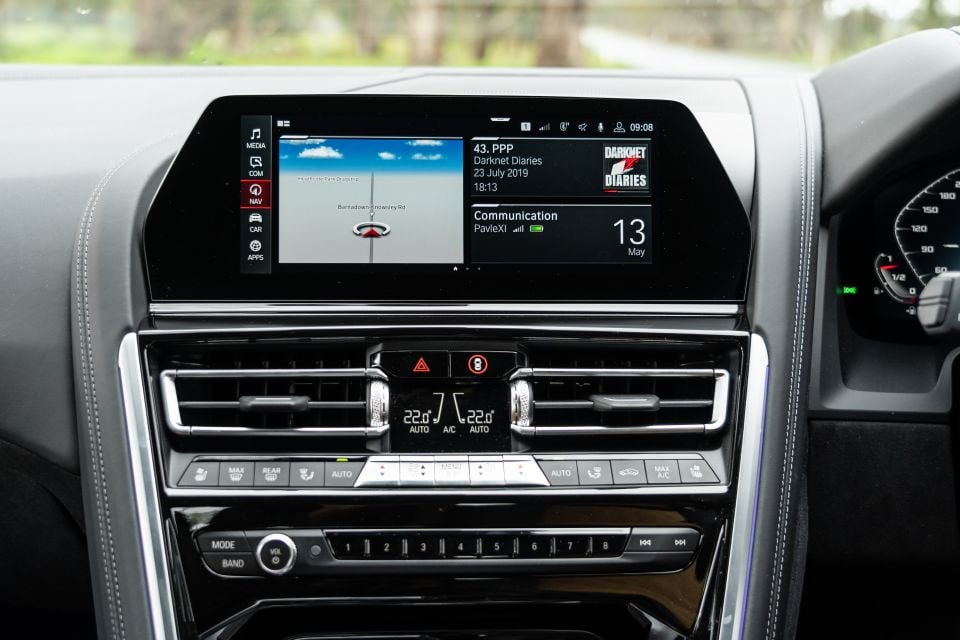
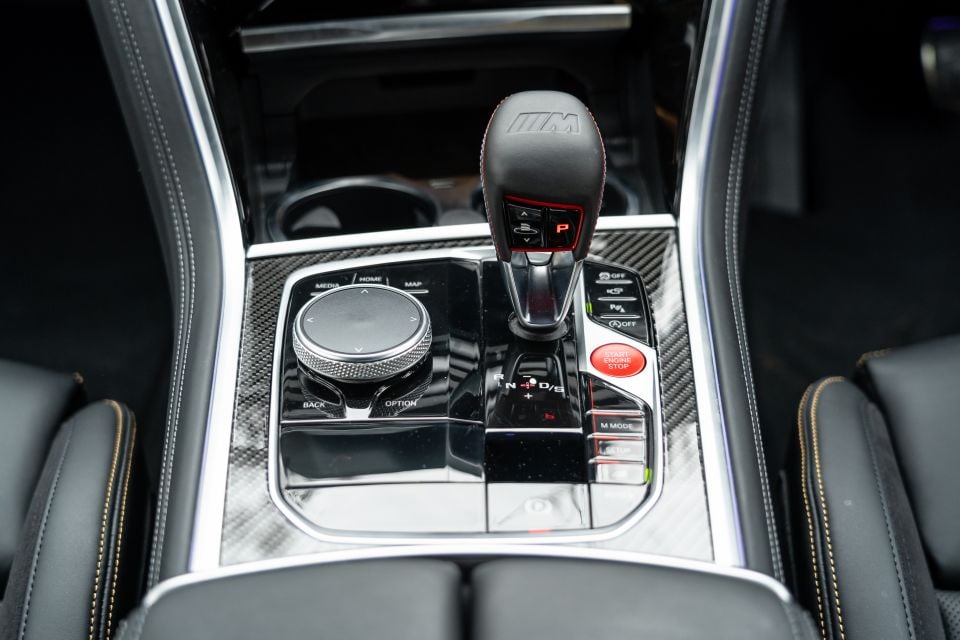
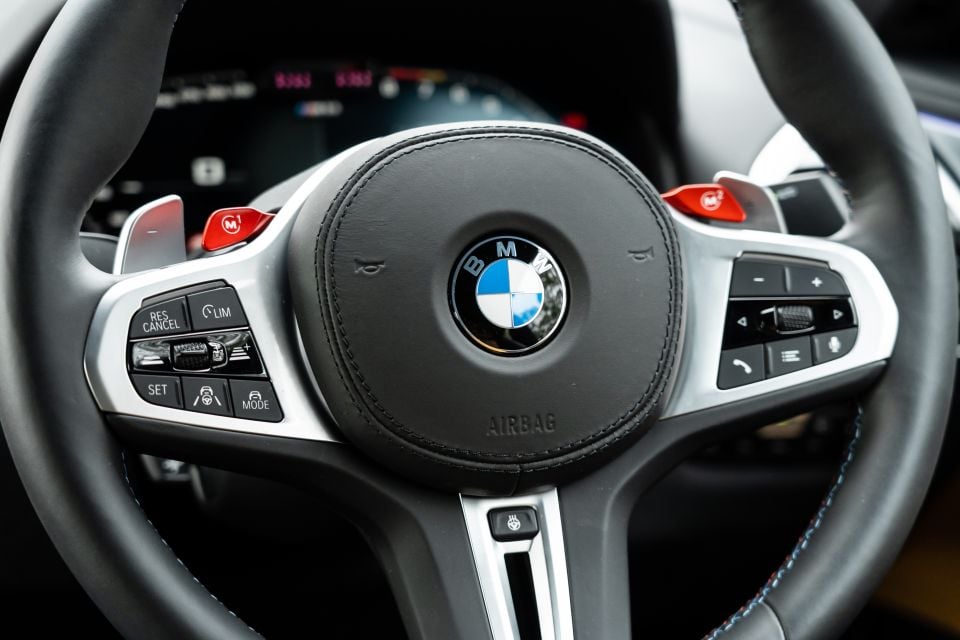
BMW has dived headfirst into connected services and offers a number of pay-to-play applications that can be added to the car over time. This includes remote software upgrades to avoid unnecessary dealer visits.
Leg- and headroom in the first row is excellent, but we would have loved to see a seatbelt arm extension to make putting a seatbelt on easier. It can be a bit far to reach in its regular position and most convertibles and coupes in this segment come with a retractable arm that makes the belt a shorter reach. Nitpicky, I know.
In the second row, you’ll struggle to fit anybody bigger than a child. Adults have (just) enough leg- and knee-room, but it’s the headroom that will have you sitting tilted. Much like the Porsche 911, the seats are for emergency use only.
Fit and finish, along with build quality around the cabin, is excellent. It’s tight as a drum and for the most part feels worth the $350,000 you’ve spent.
It’s coupled with a 16-speaker Bowers and Wilkins sound system that offers plenty of punch, and teams with the cabin’s custom LED lighting package for internal surround lighting within the speaker cage.


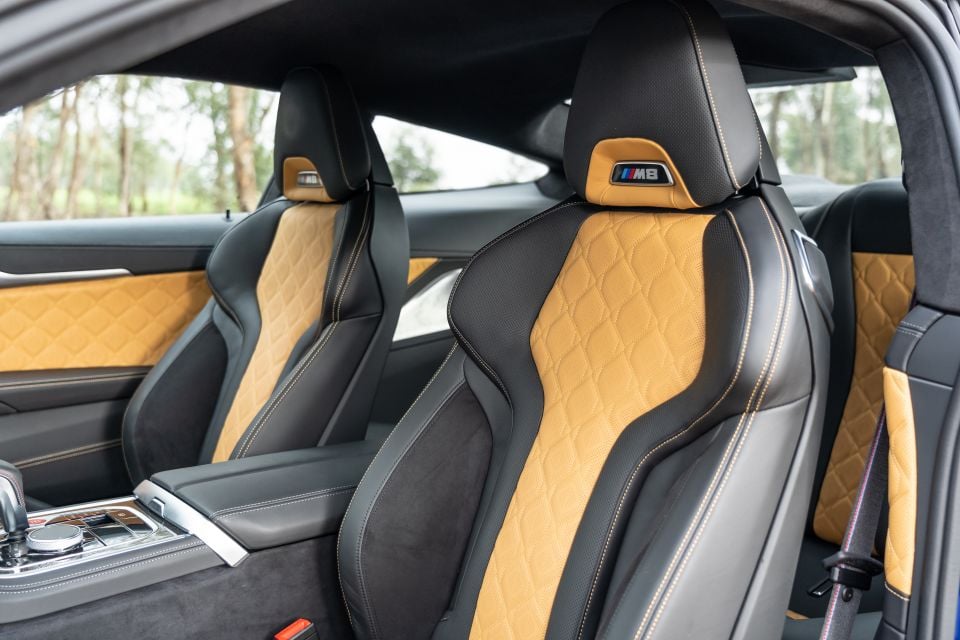
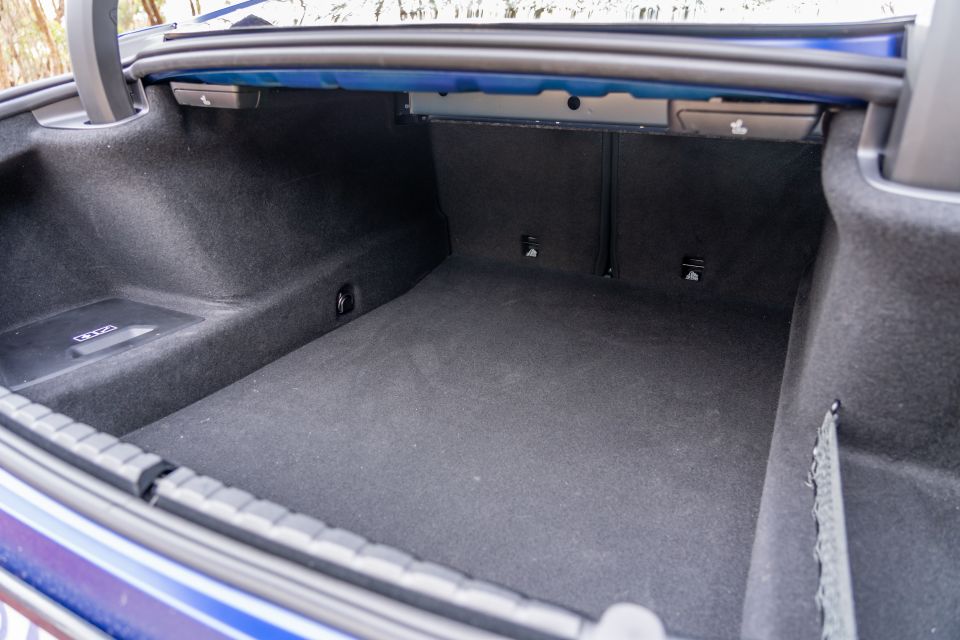
Cargo capacity comes in at 420 litres with the ability to fold the second row flat for storage of longer items.
The engine is a work of art. The engine is topped by a (real) carbon fibre cover, but once you remove it you’ll expose the twin-turbocharged V8 engine that lurks beneath.
The 4.4-litre twin-turbocharged V8 engine produces 460kW of power and 750Nm of torque, mated to an eight-speed automatic transmission. It’s a torque converter, with BMW opting to avoid dual-clutch gearbox technology.
Official fuel consumption comes in at 10.4 litres of fuel per 100km. As I’m sure you can imagine, spend time mashing the right pedal and that figure will increase, but not significantly. With the idle stop function and a gentle right foot in comfort mode, you won’t see the figure go far beyond the 14L/100km mark.
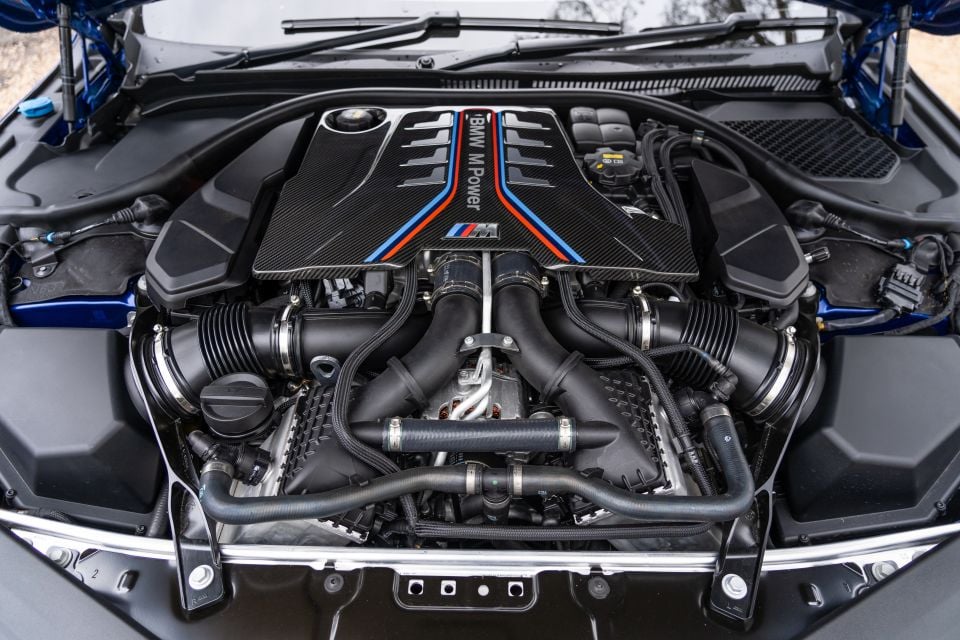
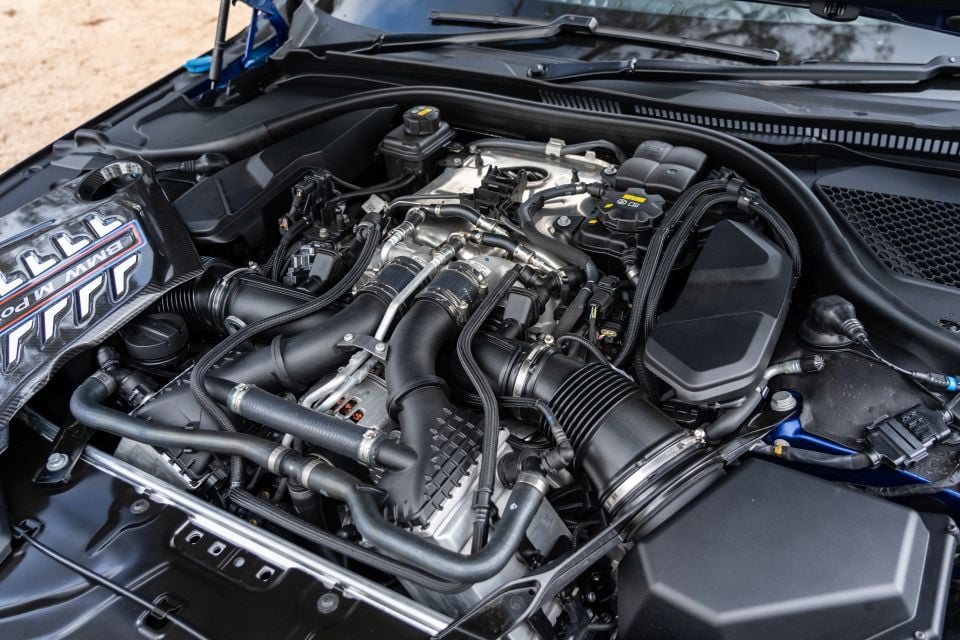
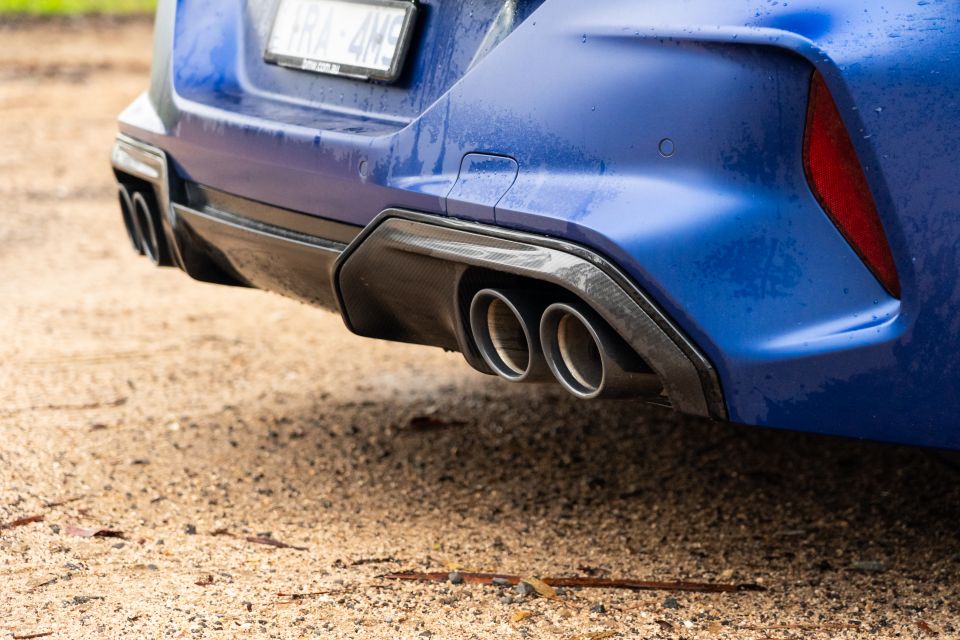
BMW claims the 0-100km/h dash takes 3.2 seconds. We tested this out with our VBox and came pretty close, clocking a 0-100km/h dash of 3.3 seconds and a 1/4-mile acceleration time of 11.2 seconds at 205km/h. Given a warmer track we reckon it wouldn’t be all that hard to hit 3.2 seconds and a sub-11-second quarter mile.
Let’s start with the low speed experience – the engine start in particular. By default the car starts in a loud mode with the exhaust open – it’s so loud that I was able to hear it turn over and idle from two levels above in an underground car park.
The first couple of minutes is also pretty loud, as the engine tries to get to temperature as quick as it can. It sounds pretty serious, and it’s not hard to tell that BMW has avoided subdued idle notes for its Competition models.
In saying that, once the engine has reached operating temperature things quieten down a bit. With the exhaust button deactivated it’s actually quite a peaceful cabin environment. There’s a burble from the rear under acceleration, but it’s not going to upset pedestrians as you pass them.
BMWs fitted with this twin-turbocharged V8 engine tend to have quite a doughy throttle. The M8 Competition is no exception, with an almost laggy response when you push the throttle pedal.
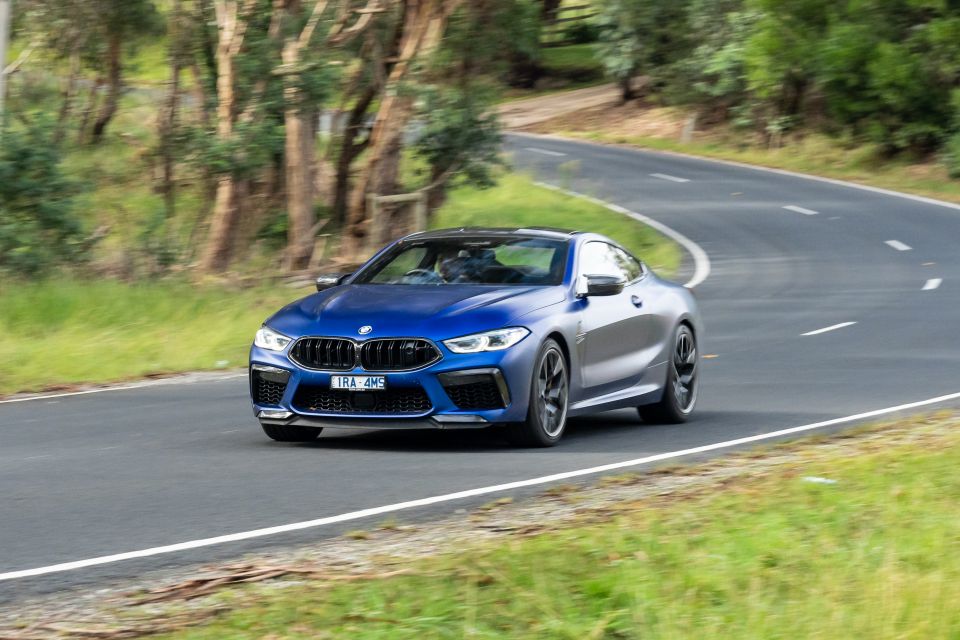
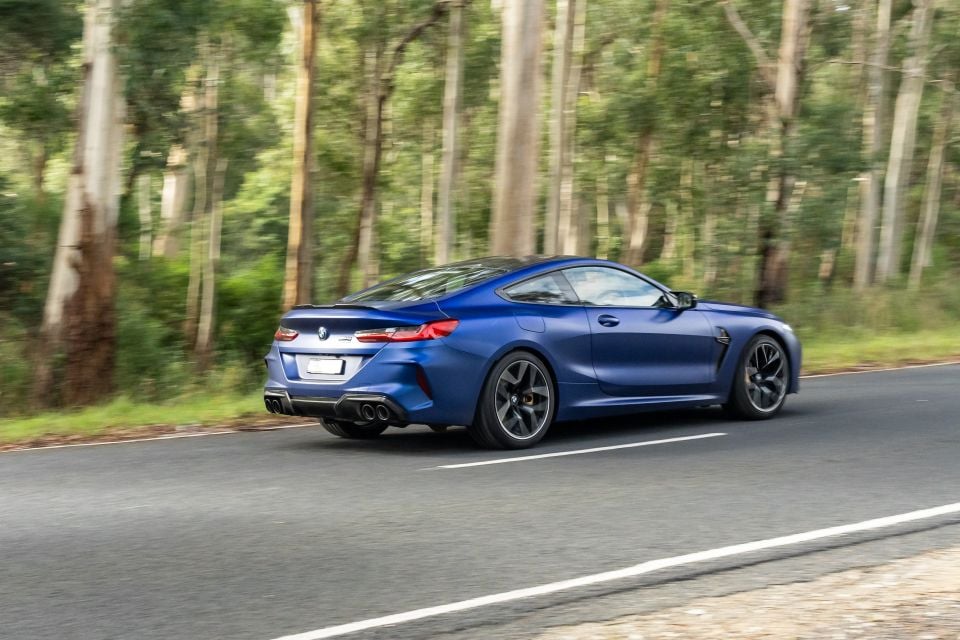
It’s almost as if it wants to stay in its current gear and avoid dropping back through gears at all costs. That works fine for the most part because the 750Nm of torque is available from just 1800rpm.
Around the city the ride is good thanks to a soft adaptive suspension tune. There’s a slight edge to potholes and speed humps thanks to those 20-inch alloy wheels, but it’s not as bad as you’d expect when you look at the 35-profile rubber.
Steering feel is fairly vague at low speed, but that’s welcomed when you consider the grand tourer image it’s trying to portray.
Brake pedal feel is interesting. It’s good in the sense of feedback through the pedal, but interesting in the sense it combines electronic actuation with a combined boost and control module. It allows the car to detect brake pedal input earlier and prime the brake system.
In comfort mode that means longer pedal travel and softer pedal feel, while in the more aggressive sport driving setting it means a firmer pedal with less pedal travel required.
Parking is a breeze with both front and rear parking sensors, along with a 360-degree camera. It’s further backed by a semi-autonomous parking assistant and a reverse assistant that recalls your previous 50m to reverse itself at low speeds – handy if you find yourself stuck in a narrow street.
Low-speed driving isn’t the M8 Competition’s forte, though. A traffic-free autobahn is where it will comfortably present you with a digital speedometer reading up to 305km/h.
Two drive mode buttons on the steering wheel allow the driver to activate individual drive modes. They’re labelled M1 and M2, and are red so they’re easy to find. Two pushes of either button engages the preset drive mode.
You can configure everything from steering feel to brake pedal feel and drivetrain response. The all-wheel drive system even has the ability to totally disengage the front axle and enter a rear-wheel drive mode – although keep in mind it can only be done with stability control completely switched off.
In full-attack mode the M8 Competition primarily has a rear-wheel drive feel to it, sending torque to the front axle only when the rear end detects slip.
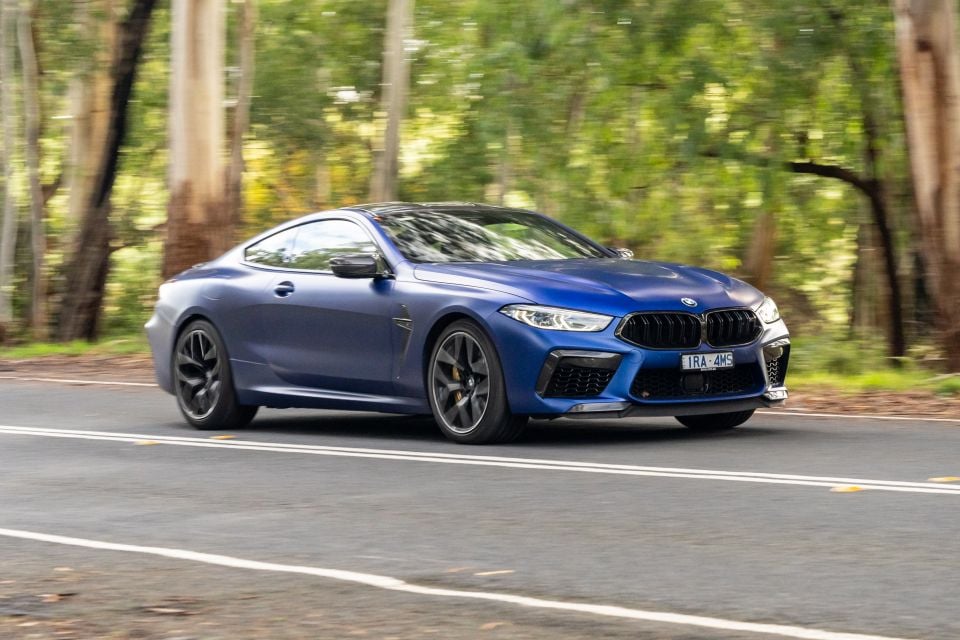
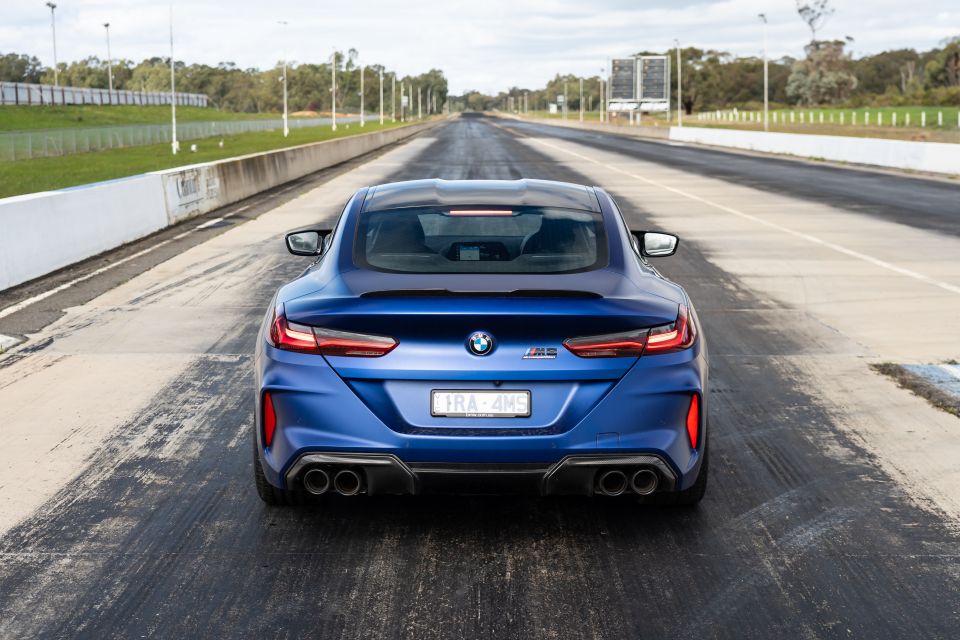
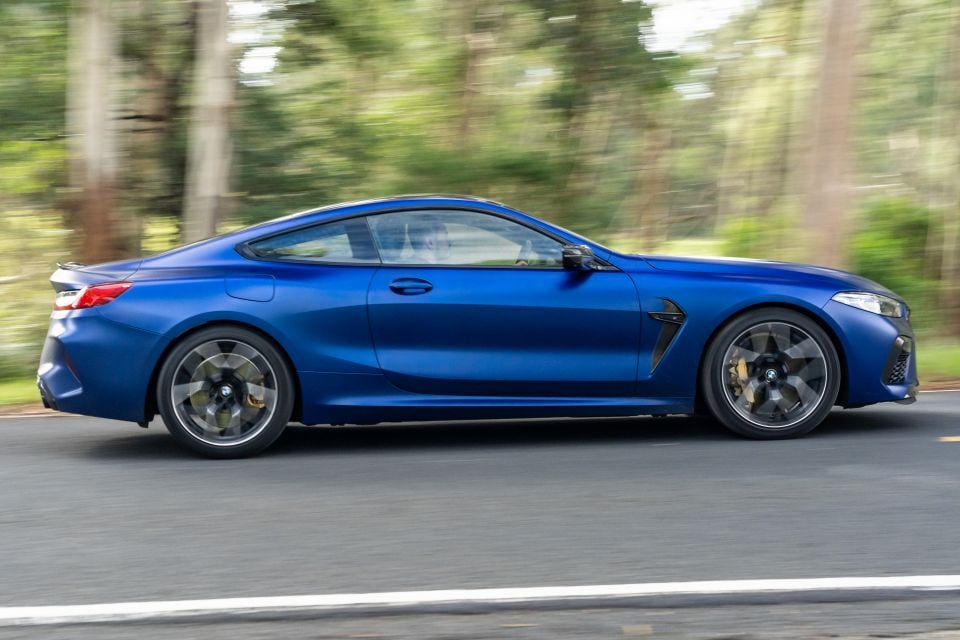
We lined up a set of corners to see how this German missile would handle. It’s genuinely remarkable how quickly the M8 Competition builds speed.
In-gear acceleration is next-level, with the run from 80-120km/h taking just 1.8 seconds. To put that number into context, it’s only marginally slower than a Porsche 991.2 911 Turbo S, which does the dash in around 1.6 seconds.
It sits nice and flat through corners and has ample traction thanks to the 285mm-wide rubber on the rear (275mm at the front). It’s easy to just feed the throttle in and hang on as it slingshots you towards the horizon.
In the full-noise mode it makes an incredibly cool noise. It’s a mix between a V8 thrum and a technologically-advanced exhaust note. There’s plenty of meat to it, with each gearshift delivering cracks and a load of burbles and pops on downshifts.
It has the same doughy throttle response even in the highest sport setting. It doesn’t feel as sharp as the Mercedes-AMG range of turbocharged V8 engines – they are razor sharp in Sport+ mode, and instantly respond to throttle inputs.
There’s not a lack of torque, it just doesn’t feel as responsive as the throttle in six-cylinder M products.
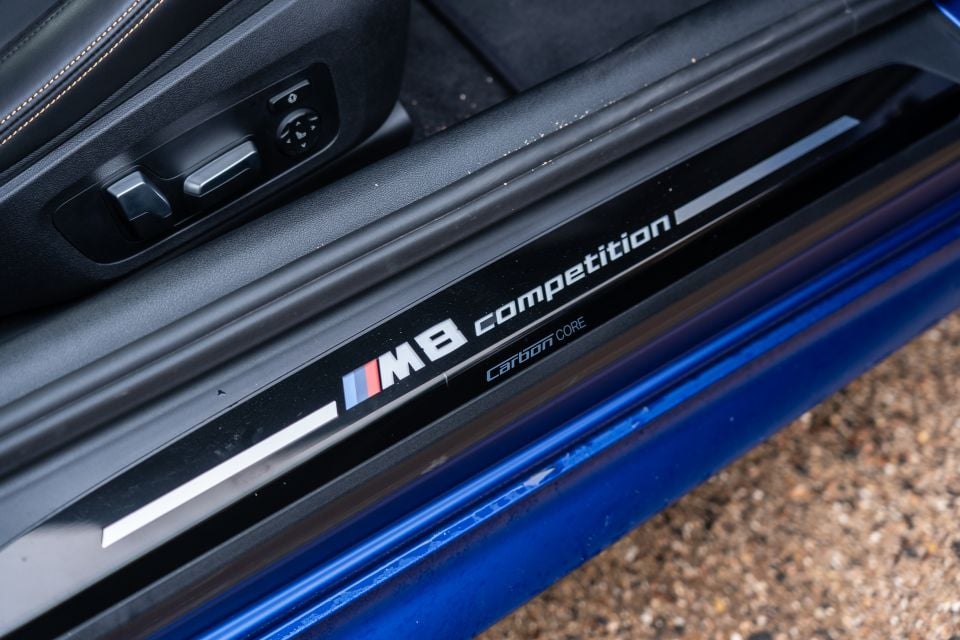
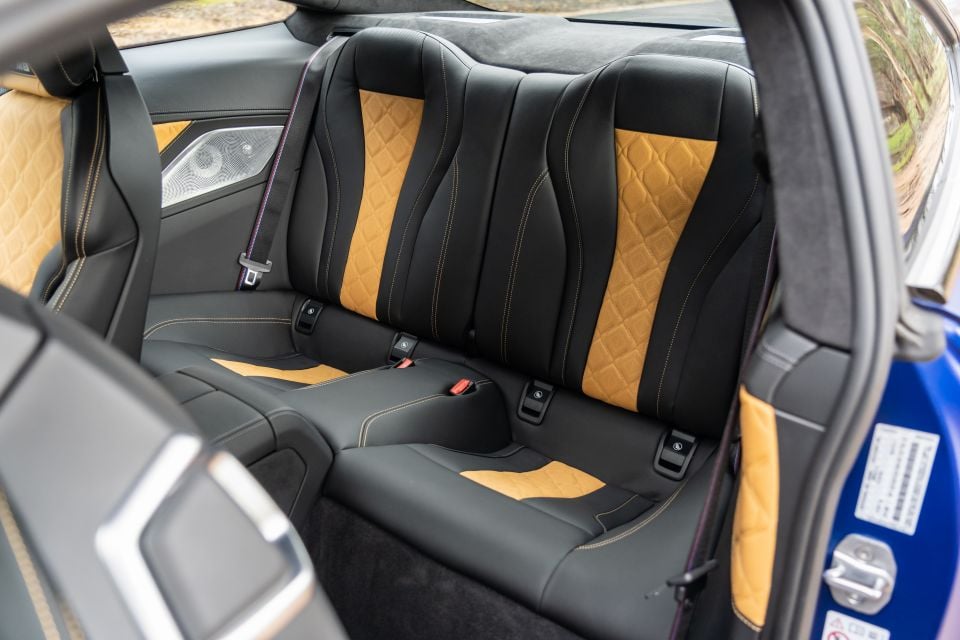
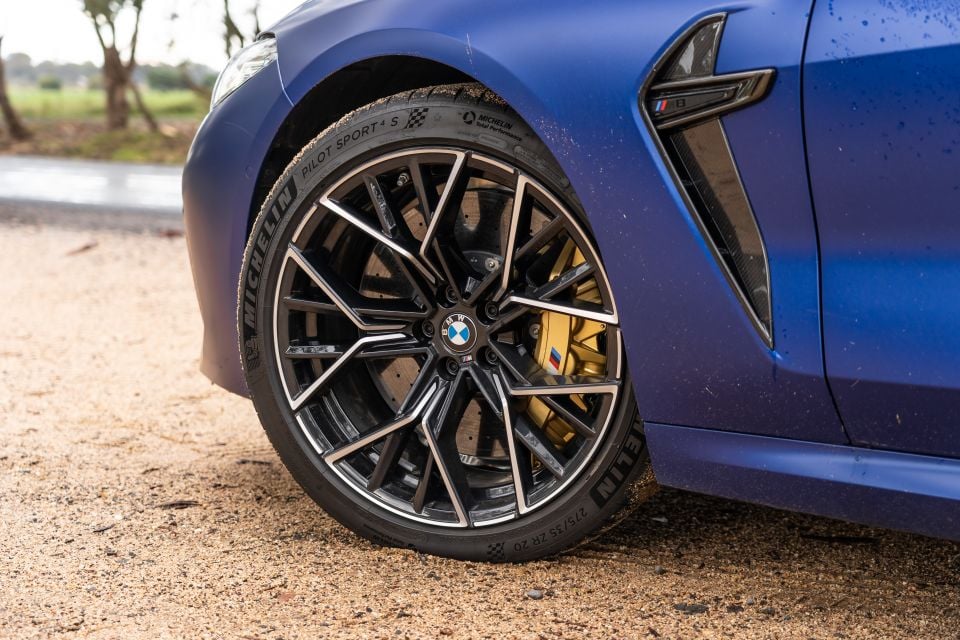
Brake pedal feel is excellent. BMW’s carbon ceramic brake package measures 400mm at the front and 380mm at the rear with six-piston calipers up front. The pedal is firm and incredibly responsive in sport mode, and the carbon ceramic brakes also work well at low speed and when cold – often you’ll find the cold pedal feel on cars with these brakes at low speeds isn’t great, with a long pedal feel.
While it’s stupidly quick and makes light work of corners, there isn’t a great deal of steering feel. The steering is heavy, but it’s not heavy in a good way.
It feels somewhat padded and nowhere near as direct as the steering we’ve come to love in cars such as the M3 and M2.
We’re okay with that, but it places it in an odd predicament. It’s not as comfortable or smooth as a Bentley Continental or a Mercedes-Benz S-Class Coupe, nor as agile or sporty as a Porsche 911. It’s in no man’s land.
BMW lags behind Mercedes-Benz on the warranty front, with a three-year, unlimited-kilometre warranty compared to Mercedes-Benz’s five.
The M8 Competition also requires 98RON premium unleaded fuel.
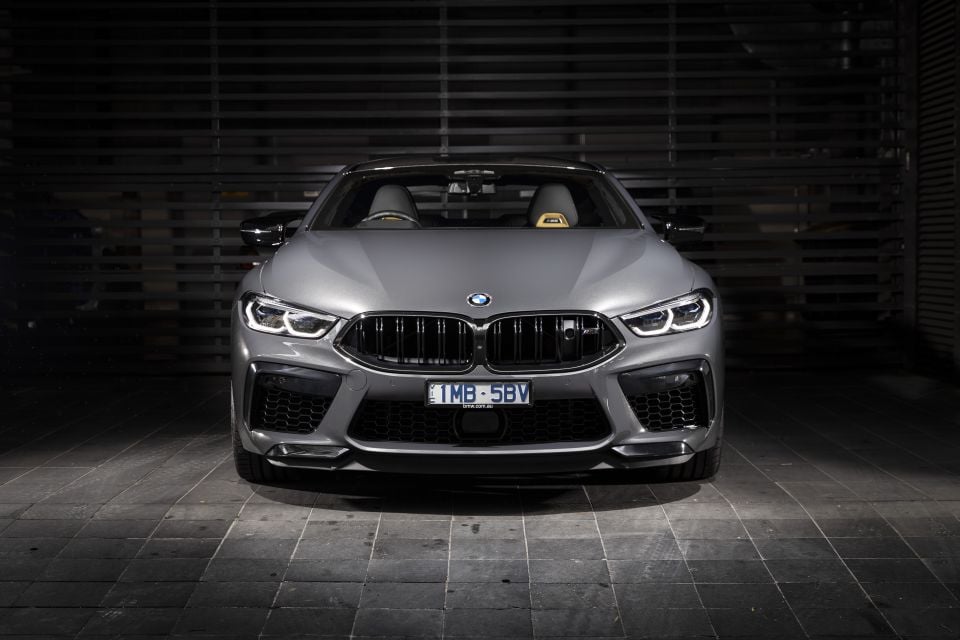
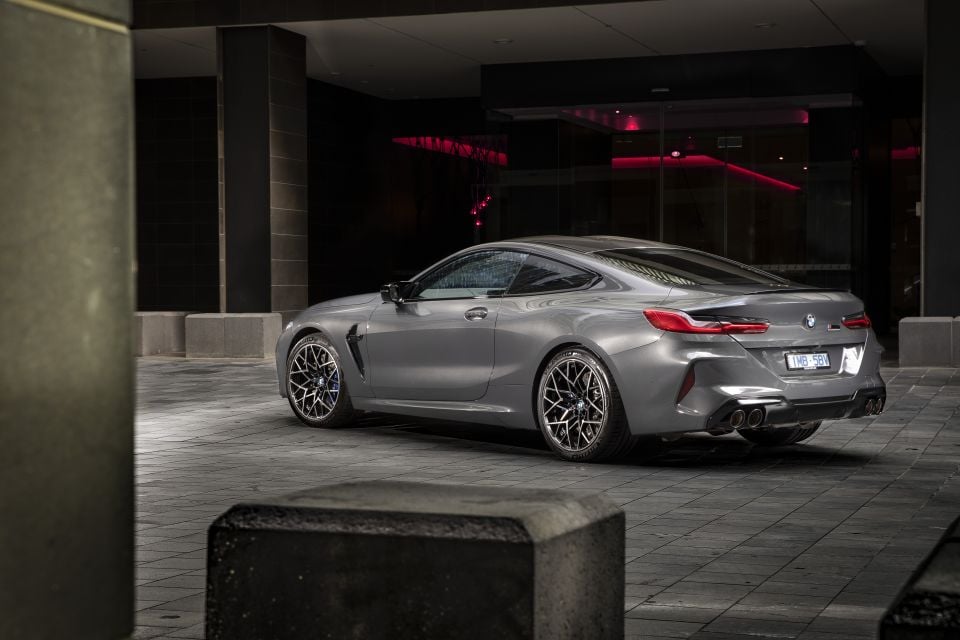
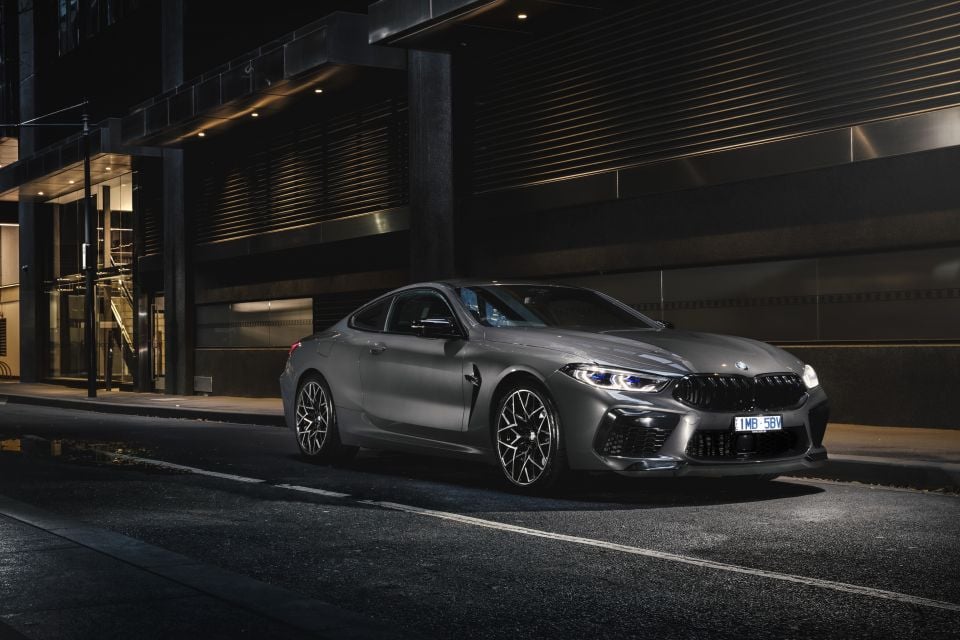
Servicing costs are yet to be confirmed by BMW, but we will update you when we have numbers.
We’re torn. We absolutely love the M8 Competition design, the interior and the complete lack of option box ticking – pretty much everything is standard.
But it’s not quite as sporty as the Porsche 911 or the Audi R8, nor quite as cushy as the Bentley Continental.
Sure, it’s quick in a straight line, but you won’t find yourself hunting corners to feel at one with the car like you would in the established players.
Perhaps a better solution to this issue is going to be the BMW M8 Gran Coupe. It’s a proper four seater, looks as good as the coupe, and you won’t feel anywhere near as bad about it not being a 911-esque driving experience.
Our advice is go the four-door. It’s just as fast and your friends won’t hate you if they need to ride in the second row.
Where expert car reviews meet expert car buying – CarExpert gives you trusted advice, personalised service and real savings on your next new car.
Paul Maric is an Australian car expert based in Melbourne, Australia. Paul is a founder of CarExpert.com.au & formerly part of the CarAdvice founding team.


Andrew Maclean
5 Days Ago


Shane O'Donoghue
5 Days Ago


Anthony Crawford
4 Days Ago


Matt Campbell
3 Days Ago


James Wong
2 Days Ago


Max Davies
6 Hours Ago